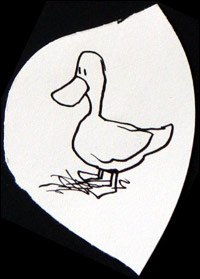 I have a confession: with few exceptions, I don’t discuss writing with many other writers.
I have a confession: with few exceptions, I don’t discuss writing with many other writers.
When it comes to talking about writing, I prefer talking with artists.
Next to talking about writing with two friends in my writing group, I prefer talking about writing with my wife (an artist), and my friend Jeremy (an artist).
I’ve spent many evenings that turned into mornings talking about writing and art with Jeremy. While what we do is very different, we both strive for a certain sense of rawness to our work.
* * *
When I attended the Writers’ League of Texas Agents Conference in June, I attended a panel with agents talking about how they like a sense of rawness in a manuscript. From there, they went on about how they can often tell what university writing program a writer attended, based on the way their works sounds.
The agents talked about how many MFA writing programs “workshop writing to death,” so it all sounds the same. While it may be technically sound, it lacks emotion; there’s no spark. In short, the rawness the agents like seeing in a manuscript is often stripped from the writing of many writers with an MFA.
* * *
In my late-night/early-morning talks with my friend, Jeremy, we often talk about reducing our work to a base level. For me, it means not being overly descriptive and sticking with basic words to tell a story. For Jeremy, it’s about reducing lines and finding basic form in all he sees as a cartoonist.
* * *
The photo of the goose above was taken at the writer’s conference I attended in June. This goose hung out near the windows where writers had their consultations with agents.
It’s funny how many people I heard talking about how relaxed the goose made them feel before going into a little room to talk for ten minutes with an agent of their choosing. For some people, the presence of this goose made pitching their books easier, like it was there to say, “Relax, it’ll be okay.”
* * *
While I love Jeremy’s published work and the paintings he creates for gallery shows, I feel very lucky to have the chance to thumb through his sketchbooks when I visit.
Jeremy delivers pizzas on the side, and he often stops and quickly sketches things on deliveries.
There is a rawness in Jeremy’s sketches that I’ve always loved. One night, while thumbing through the pages of a sketchbook I hadn’t seen, I came upon some sketches of ducks.
I loved the contour drawings, and Jeremy showed me how those drawings stick in his head so he can reduce all the lines to the style he strives for in his cartooning.
He showed me a piece of Bristol board near his drawing table with the cartoon version of the ducks. There was one drawing of a duck I loved so much, Jeremy cut it out and gave it to me.

Looking at this basic drawing of a duck, you don’t see the decades of studying anatomy, tens of thousands of sketches, and pain and toil Jeremy went through to get to the point where he can pick up a pen, dip it in ink, and draw something with seemingly no effort.
As a writer, I want my writing to not get in its own way; I want it to seem as effortless as Jeremy’s inked line. But there’s still a spark of rawness in the sketch of the duck.
As a writer, I want that raw edge exposed in the words I put down on paper.
As a writer, I will always strive to have the rawness of this duck!

Leave a Reply